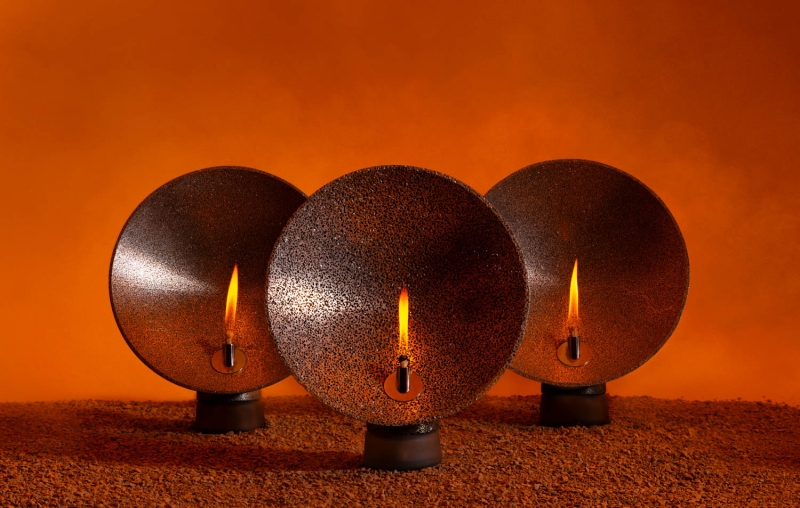Contents
- 1 Benjamin Hubert Challenges Design With A Humanistic Approach
- 1.1 Interior Design: A 10th anniversary is a natural time to look back. How does it feel?
- 1.2 ID: Were you thinking it was too much about yourself as the product, taking your name off the door?
- 1.3 ID: What was the first big project for Layer that expressed this broader agenda?
- 1.4 ID: This extends beyond human users. What interests you in designing for pets, such as the Earth Rated range?
- 1.5 ID: How does that translate into the interiors and furniture work you do?
- 1.6 ID: What’s the palette for your exhibition design at Salone?
- 1.7 ID: Could you share an example of that?
- 1.8 ID: How will you present these works at Salone?
- 1.9 ID: Speaking of the combination of digital and physical spaces, how are you and Layer thinking through AI?
- 1.10 ID: What’s next on the board for you?
Layer and Muuto collaborated to create an oil lamp powered by an algae-derived oil.
Since founding Layer in 2015, Benjamin Hubert has blurred the boundaries between the conceptual and commercial, the provocative and the productive. Along the way, he’s built the East London studio into a team of some thirty explorers responsible for the creation of everything from sustainable dog toys to AR glasses. The progress was detailed in the firm’s 2022 monograph Layer, and will be brought to life as 101010, a major exhibition during this year’s Milan Design Week. Hubert recently sat down for a video chat with Interior Design to look back, look ahead, and look deeper into the role of design itself.
Benjamin Hubert Challenges Design With A Humanistic Approach
Interior Design: A 10th anniversary is a natural time to look back. How does it feel?
Benjamin Hubert: It’s gone very quickly. Initially, I had a studio under my name, and it was fun. My background is in strategy and industrial design, so I was doing some nice work. But it was a little one-dimensional. That moment of pivoting and founding Layer was an acknowledgment that there was more ambition to be fulfilled. It was incredibly daunting. It was also probably the biggest, scariest business decision I’ve made.
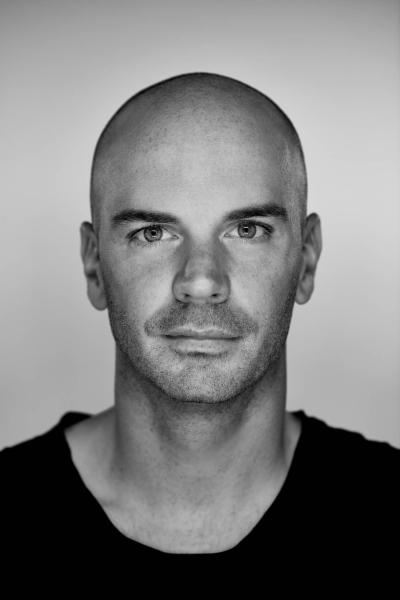
Benjamin Hubert.
ID: Were you thinking it was too much about yourself as the product, taking your name off the door?
BH: For sure, but removing your name allows you to have an agenda that is broader and quite selfless. That’s important as a designer because there’s a place for personality, but there’s more of a place for passion that comes from individuals and a little more democracy. The team is the reason people choose to work with us. We have intentionally not scaled to a faceless, consultant suite. We’ve kept it to about 30 people so it’s remained personal.

Collect is a rain catchment tower. Photography (C) Scott Hobson-Jones and Layer.
ID: What was the first big project for Layer that expressed this broader agenda?
BH: The wheelchair we worked on with Nike was the epitome of the type of work we want to do. It’s in a category that is an extension of yourself: personal mobility. We thought of Braun and Dieter Rams, and I personally love that stoic nature of minimalism. Though it might feel cold and unapproachable, its sinuous, fluid nature of motion translates into performance attire pretty happily. We went for a radical aesthetic as a bit of a conversation starter.
I feel a sense of reassurance when there’s actually something to solve through design, where you could reason with the outcome and hold it to account. It brings me satisfaction when you can impact multiple areas of interface with somebody’s experience. The more challenging and complex a project is, the more opportunity there is to make it better. Also, the more responsibility you have, the more designers should push. I mean, the reason we set up divisions of all the work is because our most successful projects are the ones we look at from brand, digital, product launch, sustainability, and accessible price point—focusing on that ethos around it, that world-building.
ID: This extends beyond human users. What interests you in designing for pets, such as the Earth Rated range?
BH: Well, your user group can’t speak, right? Pet parents have lots of opinions, so you can glean loads of juicy insights through [talking to them] but then you’ve got to work out: What does the creature want and need? I’m a dog owner, and when I’m in the US and a see a green thing that’s hanging on somebody’s hip or in a dog’s mouth, nine times out of ten it’s something we designed—and that just brings me a great sense of pleasure, when you create a sustainable thing that is a mini status symbol for the person and brings the pet so much joy.

Canine collection designed by Hubert for Earth Rated, a Canadian dog brand.
ID: How does that translate into the interiors and furniture work you do?
BH: We’re working on something around mobility, with crash testing and that type of thing, so there’s a very serious kind of due diligence and engineering that makes that project interesting. But something we do successfully is to have quite a breadth of projects, where we work on a real nice piece of furniture or a cool piece of technology all under one umbrella. A lot of agencies don’t do the warmer, softer work. But I just really love the human scale, the beautifully-crafted materials, the sense of long-lastiningness that is a core of the furniture category. It’s not always a direct translation, but a level of care and craftsmanship that can be cross-pollinated into how you treat a piece of metal or handle a piece of recyclable plastic—and that gives us a broader palate.
ID: What’s the palette for your exhibition design at Salone?
BH: It’s almost a physical representation of the book, but quite revealing. It makes you feel a little vulnerable. We’re creating a bunch of animations for six experimental prototypes with brands that challenge the way we live through the lens of craft, from fashion to furniture to object. Each one tackles a fundamental need, whether it’s sustenance, water collection, food, or community. We thought about what was interesting but actionable, and then how we would solve them if we weren’t to use technology and electricity. And the way for that was through craft, with processes that could be around for thousands of years but as viable solutions that don’t overly rely on things like networks.
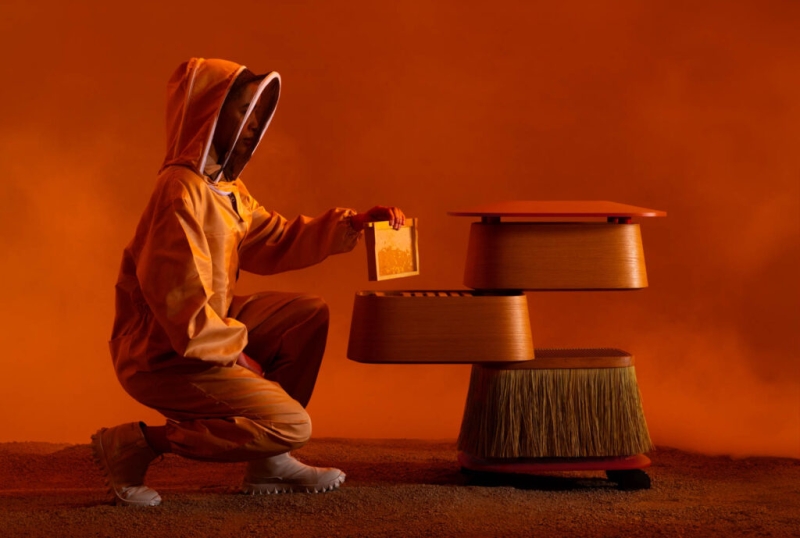
A preview of the 101010 exhibition during Milan Design Week. Photography by (C) Scott Hobson-Jones and Layer.
BH: We’re working with Muuto on these oil burner lights that use algae. How do we find a sustainable, renewable fuel to bring light to the environment? And rather than go the solar route, we wanted to think about other fuel sources which are in absolute abundance. We’ve been researching algae, which is an amazing material, and then we started talking to people who create oil from it. You can use algae as a fuel source to burn, which many people don’t really know about.
ID: How will you present these works at Salone?
BH: The space will be amazing: 10 Corso Como was renovated a few months ago, and have these beautiful gallery spaces. We’re showing a serious collection of past works as beautiful, large-scale, translucent watercolors. As you go through the space, you will land on the new collection, presented cleanly and immediately, as each piece is expressive in its form and size. We’ve been working with an amazing animator to tell the stories of the product, but it’s incredibly clean as an exhibition because the space is beautiful in its own right.
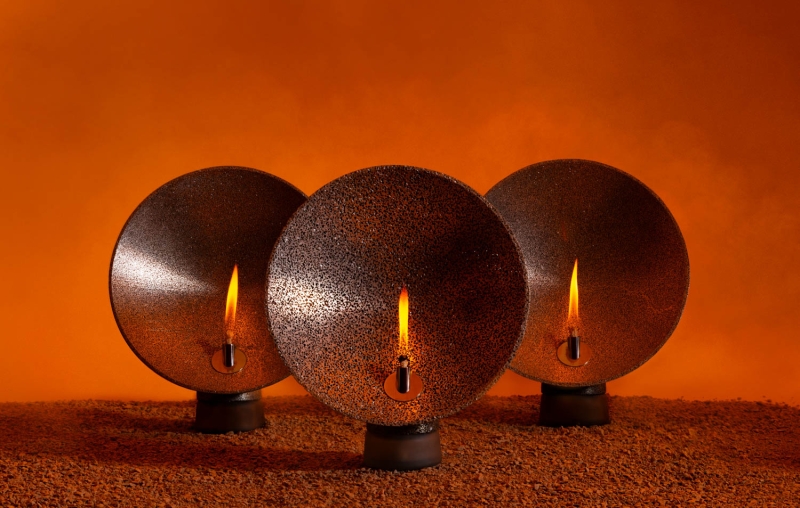
Layer and Muuto collaborated to create an oil lamp powered by an algae-derived oil. Photography (C) Scott Hobson-Jones and Layer.
ID: Speaking of the combination of digital and physical spaces, how are you and Layer thinking through AI?
BH: We use some generative visual tools for exploration because they’re quick and sort of hilarious, and we use a few video tools in more serious ways. We embrace new technologies in terms of process. But this new collection is definitely a sort of mini commentary on that, in that we are using material and craft that speaks to the maker, the hand, and things that are more humane. It’s kind of like: Don’t forget, we’ve been doing some things well for millennia and we should talk about those things again. The only solution isn’t necessarily the machine-made. I’m both fascinated by bleeding-edge tech and the oldest craft, and I think we need to remember that both those things are important.
ID: What’s next on the board for you?
BH: I’m increasingly interested in working on things that make a difference. What I would like to do is more community-based work, whether it’s with charities, NGOs, or not-for-profits—things where design isn’t just a desire, but a necessity. Some of the most difficult challenges are about how you actually get things on the ground and working, not just conceptually interesting or conversation pieces. Access to water, access to medicines, how you can transport from one place to another—these are all the mental needs to make somebody happier and healthier to make their lives work. Designers should have a responsibility to use their time towards that. I think design should be for the many. And I would like to think that in another 10 years’ time, the idea of democratic design and investment in the design of things that are more affordable and needed, will be more of our mandate.
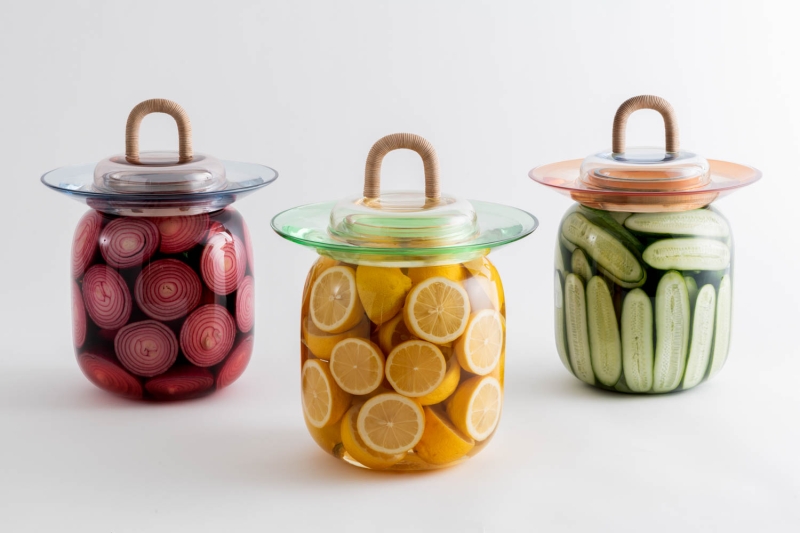
Keep is a glass vessel that can be used to preserve food. Photography (C) Scott Hobson-Jones and Layer.

A watercolor by Hubert of a colorful cat refuge. Layer has collaborated with startup Cat Person on modular furniture for cats.
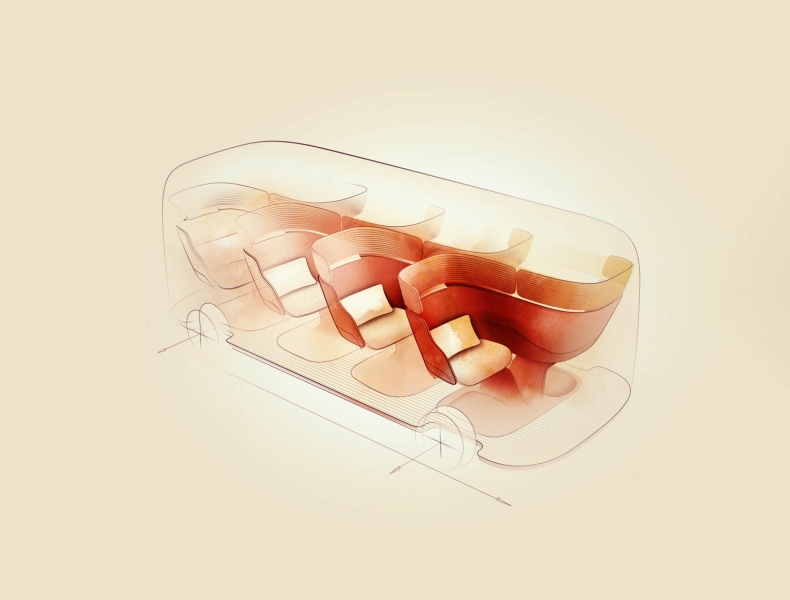
Joyn, a watercolor by Hubert, showcases a near-future concept for a more desirable autonomous ridesharing platform.
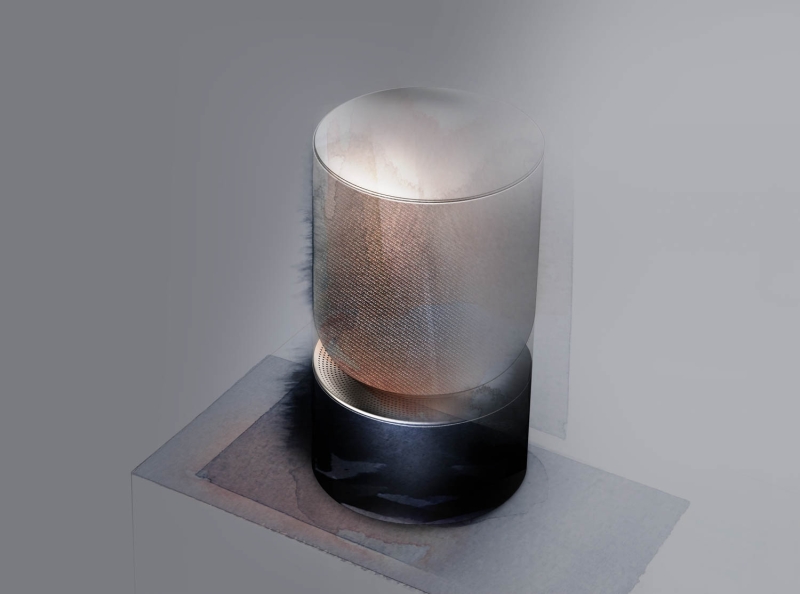
Beosound Balance, another watercolor by the designer, shows a compact yet powerful speaker for luxury Danish consumer electronics brand Bang & Olufsen.
